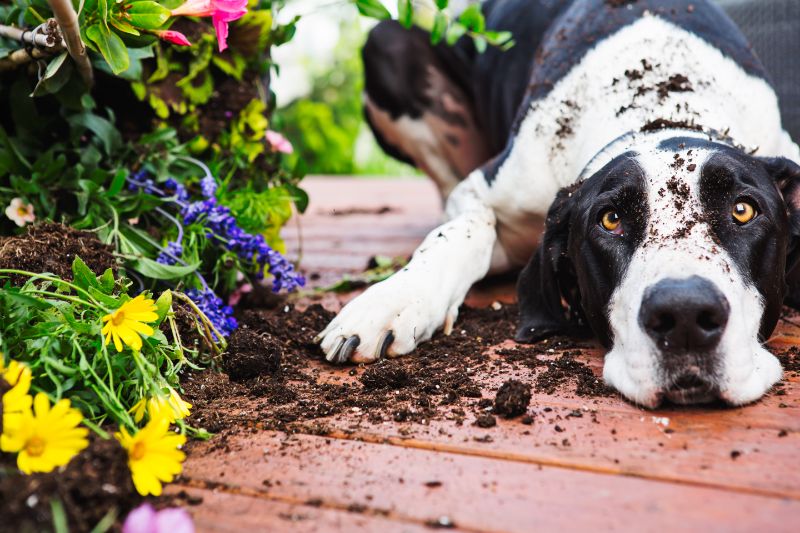
Spring has finally sprung, and nothing helps to cheer the soul quite like some pretty blooms and time in the great outdoors. It is important to be sure, though, that your love of plants and your love of animals don’t interfere, though.
When choosing what types of vegetation to allow into your home and garden, Shiloh Veterinary Hospital hopes that you will consider your four legged family members. Choosing pet safe plants isn’t hard, and doing so will let you enjoy the spring with your furry friends.
Safety First
Plants pose a unique danger to pets. Animals often explore the world with their mouths, and that can include flowers and greenery. Many plants cause some type of irritation in the mouth and/or gastrointestinal tract if chewed on or swallowed. This is a natural defense mechanism for many.
Others pose more of a serious risk, however. Lily plants, for instance, are well known for their severe toxicity to cats. Batting at the flower and getting pollen on the paw and then cleaning the paw is enough to cause kidney failure in cats.
Sago palms are another example of a serious outdoor toxin for our pets. Chewing on any part of the plant including the leaves, roots, and the nuts they produce can result in liver failure.
As a proactive pet owner, it is important to know what the plants in your home and yard are and to identify what risks they may pose to your pet. It’s also imperative to call us right away if your pet has ingested or possibly ingested a plant so that we can help you to determine the appropriate action.
Our Favorite Pet Safe Plants
Fortunately there are lots of pet safe plants out there to choose from. It’s entirely possible to brighten your home with beautiful vegetation and keep your pets protected at the same time.
Our top ten favorite pet safe plants for the home include:
African violets – These small houseplants are well known for their vibrant purple, blue, and white flowers and fuzzy leaves. They don’t need a lot of light and thrive above 65 F. They do need some TLC, making them a fun houseplant to dote on.
Baby rubber plant – Another fun houseplant option, rubber plants have pretty shiny leaves and grow up to about 30 cm in height. They can occasionally flower, but mostly add greenery to a sunny spot in your home.
Boston fern – Boston ferns are a great way to add some lush, tropical greenery to your home, inside or out. High humidity and consistent moisture help these beauties to accent your living space and look great on a porch or patio.
Calendula – This plant, also known as the pot marigold, is a cheerful flower that is sure to bring some sunshine to any room. This hearty flower is sure to do well in your yard or garden with a variety of blooms through the summer and into fall.
Gerbera daisies – When it comes to flowers that make you smile, Gerbera daisies hit all the marks. These cheery, colorful flowers hail from South Africa and can do quite well on your patio or in your garden with careful watering practices.
Hens and chicks – These pretty succulents are absolutely amazing in a pot or in your flower beds. Many succulents are pet safe, although it is important to research each individual one as there are exceptions.
Parlour palm – This elegant houseplant is one that almost anyone can handle. Inexpensive and low maintenance, parlour palms often thrive where other plants cannot.
Phalaenopsis orchid – If you want to try your hand at orchids, the Phalaenopsis is a good place to start. Elegant and stately, this genus is a little less demanding than some of its cousins and non toxic to pets. They look great on a coffee table or side table in almost any home.
Prayer plant – Also known as the Maranta plant, this lush greenery with interestingly patterned leaves likes to spread low and wide, making them perfect for hanging baskets in the home.
Spider plant — Another classic houseplant, these easy to grow plants can add some pretty green to many areas of the home. They look lovely on a windowsill or hanging in a basket where their fountain-like leaves can spill over.
Pets and plants can live in harmony. Both bring a lot of benefit to us as humans and it is only natural to want both in our lives.
